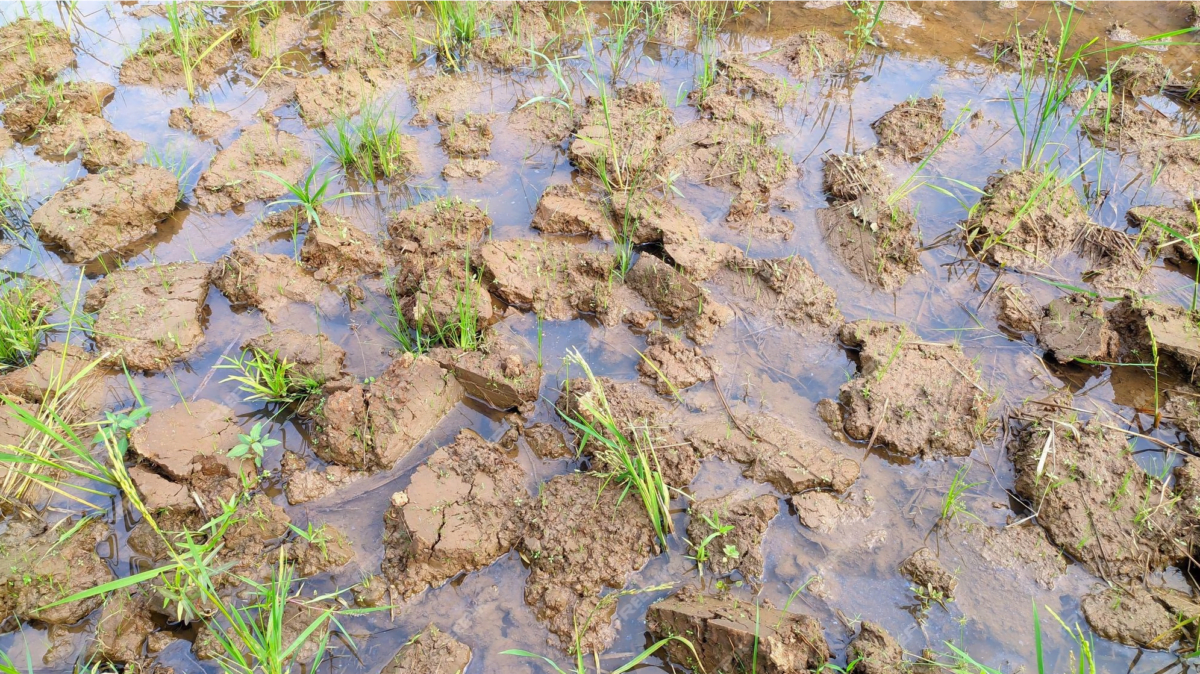Managing Waterlogged Soils in a Rain-Soaked Season

The relentless downpours this season have left a trail of destruction, with crops submerged and besieged by slugs, marking this November as Kenya’s wettest since the turn of the third decade of the millennium. Fields stand as testament to the deluge; some have already declared losses as seeds languish in waterlogged soil.
Most growers in most of the regions in Kenya have shared their plight. While some cereals managed to find their place in most fields, those sown in the final days of September and October wear a cloak of distress. Farmers anticipate that most of these belatedly planted crops may not give a good yield due to poor establishment. A perceptible shift towards the next cropping season and environmental fallow schemes is on the horizon.
Farmers reckon that currently the soils are saturated, and unless a substantial dry spell graces us, resuming field activities seems unlikely until next year, stressing the need for growers to temporarily shutter their field operations. Comparing this year’s rainy season to its predecessor, there is a significant financial toll as crops already in the ground succumb to the combined forces of rain, seed loss, fuel, herbicides, and labor.
Unprecedented challenges arise in the form of slugs, presenting an agricultural conundrum. Consolate, with over 40 years of farming and agronomy under her belt, admits that she has never seen anything like it. Entire fields of corn, vegetables and other crops succumb to the insatiable appetite of these slimy invaders.
Weed control becomes an additional headache for growers. Some crops, lacking the shelter of a herbicide program, face an uphill battle. Some managed an early pre-emergence herbicide application before the rains hit, but a considerable number did not. There is potential for application opportunities, albeit with a caveat: a subsequent spell of rain could exacerbate the stress on crops.
Sloping terrains introduce another set of concerns, with cautions against leaching and runoff risks, especially when applying herbicides or fertilizer, as chemicals may pollute water sources and aquifers. In areas where fields have been rendered impassable, growers need to utilize post-emergence sprays where necessary.
In extreme scenarios where weed control remains elusive, terminating crops with glyphosate applications can be an option since this minimizes the weed burden and aids the long-term crop rotation strategy.
READ: Understanding Carbon Credits and How They Can Be Harnessed In The African Agriculture
While there is an impediment of wet soils on root development and crop resilience, it is recommended that an early dry season-applied phosphorus spray or fertilizer be used. This, coupled with an easily metabolizable carbon source and amino acids, could foster rooting and provide crops with a much-needed energy boost. Shallow rooting resulting from the sodden rainy season becomes particularly problematic if a dry spring compounds the challenges, leading to potential drought issues.
As we grapple with the repercussions of this season’s inundation, echoes of similar challenges reverberate globally. The resilience of farmers and the adaptability of agricultural practices, especially in regions like Africa, become paramount. The lessons learned from tackling waterlogged soils can serve as a beacon of inspiration for creative integration into African agricultural systems, ensuring sustainable practices amidst unpredictable climates.
All said, the art of managing waterlogged soils demands a delicate balance of experience, innovation, and resilience. As the rains recede in the coming days, farmers face the daunting task of revitalizing fields, embracing lessons learned, and fortifying against future floods.




2 comments
Purcell E. Olando
November 24, 2023 at 22:37
This is quite informative considering I am experiencing this in my area, lower Nyakach near Kano plains where major crop is Rice and some areas cultivating maize and beans.
The area now.is.covered with water with visible crop destruction.
Eagmark
November 25, 2023 at 00:04
Thanks Purcell. We are glad you were able to get some insight from the post.